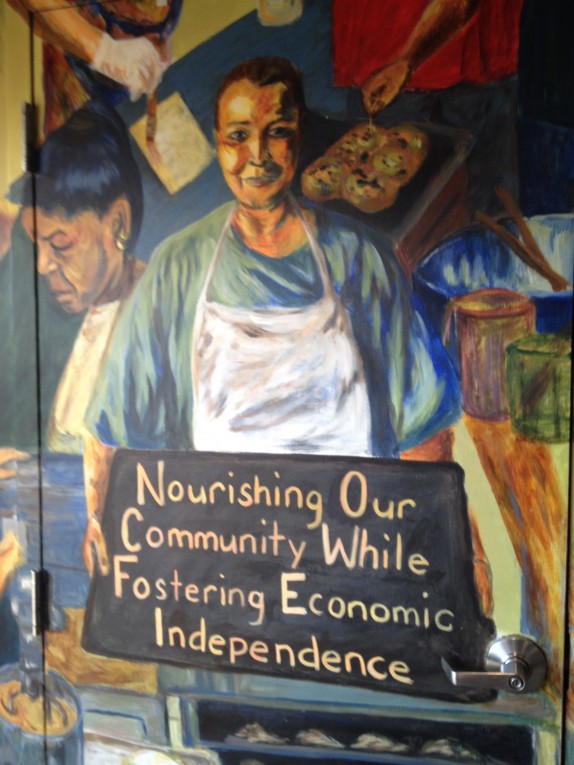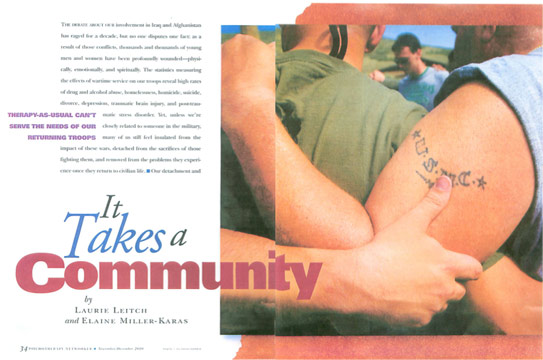A better title for this would be “Thinking Outside the Brain.” Are you familiar with the McGovern Institute for Brain Research at MIT? The work being done there reflects the extraordinary pace at which understanding of the health and disease of the human brain is growing. Research coming from the labs of this leading neuroscience research center is groundbreaking.

Graphic by Andrii Kondiuk/Shutterstock
In October we had the opportunity to have a tour of some of the MIBR labs and to meet Ki Goosens, a researcher who thinks outside the box. Her research focuses on the brain’s response to fear and threat and the amygdala’s importance in fear learning. While much of the research on fear conditioning and PTSD has focused on the HPA axis, Goosens’ work took a different focus, exploring what the stomach may contribute to fear learning. Her studies thus far (using rats) have shown that a substance produced in the stomach called Ghrelin may be a major contributor to conditioned fear. Ghrelin, according to Goosens, not only triggers hunger (it is called “the hunger hormone”) but is also released when there are periods of chronic stress.
Goosens’ research with rats found that ghrelin causes the amygdala to release a particular growth hormone that generates a fear response (“freeze”). When the research team blocked the receptors to ghrelin or to the growth hormone fear diminished. Their exploration of the association of ghrelin with the “fight” or “flight” response (thought to be triggered by adrenalin released by the adrenal gland) showed that ghrelin has an effect on fear that is independent of adrenaline. Animals whose adrenal gland was removed continued to become frightened, showing that the conditioned fear response is not generated only by the adrenal gland stress chemicals as has been previously thought.
The researchers hope that this exciting finding may pave the way for preventive approaches to PTSD for which no drug currently exists. Imagine if there was a way to “inoculate” individuals prior to experiences likely to generate chronic stress (such as war) and in so doing decrease the likelihood of the debilitating and often chronic symptoms of PTSD. Ki Goosens’ and colleagues work is published in the online Journal of Molecular Psychiatry. Molecular Psychiatry doi:10.1038/mp.2013.135:
What’s in a word?
I’ve always been interested in words, so much so that as a child I kept a notebook in which I collected various words that captured my fancy. As a child the words were sensuous words that simply felt good to say or that spoke to me of something magical (“indigo”, “intercoastal waterway”). Much later, as an adult I began to see the political power that words could have. Years ago, for example, while working as a consultant at a large university hospital in Washington, DC I heard the words “incompetent cervix” used to describe a woman who was having trouble carrying a baby to term. Or the phrase “he failed the protocol” used when a man had not responded to a regime of treatment. Recently, in our work with veterans I am hearing the term “unfit for duty” being used to describe a troop who was deployed to a war zone and due to injuries (seen and unseen) is no longer able to be sent back. The blaming nature of these descriptions generates pain, shame, and guilt and is a way responsibility is displaced from those who set the procedures, protocols, and strategies to those who are simply trying to do their best.
Most recently, however, I came across the term “neurodiversity.” This is a term that, instead of focusing on deficits has a lot of potential to depathologize. It is being used to describe individuals who may have a limiting cognitive challenge such as autism or Down Syndrome and who also have cognitive strengths. The term highlights the strengths rather than the limitations. It isn’t that we don’t need to be able to diagnose children and adults in order to find appropriate protocols to best meet their needs, but diagnostic labels when used in everyday life often carry a powerful stigma that robs people of hope and dignity. I wonder what word could be used instead of “unfit for duty” that reflects the respect and competency of our warriors? If you have any ideas we’d like to hear them.
Communities that Work, Communities that Heal
Did you know that by the year 2050 seventy-five percent of the world’s population will be living in cities? Did you know that, according to FEMA, from the 1980’s to the 2000’s there has been a 40% increase in major disasters? And, did you know that The Rockefeller Foundation’s project called 100 Resilient Cities includes funding for a “Chief Resilience Officer” for the 100 cities selected as the world’s most resilient? Resilience is on the minds of urban planners, climatologists, and visionary thinkers from many disciplines; all wanting to tap into and contribute to human potential.
At TGW resilience is our primary focus. With the support of a Rockefeller Foundation Fellowship in 2012, Threshold GlobalWorks has developed a curriculum for building resilience in systems of all sizes. Self-regulation skills are at the foundation of the curriculum but we also have a set of practices and processes that, like the individual level skills, are derived from neuroscience research. The curriculum, which takes a collective impact approach, helps groups, work systems (such as corporate, educational, and health care settings) and communities build and implement a social resilience plan that is specifically tailored to their strengths and challenges.
At the end of October we conducted a workshop for the Boston Alliance for Community Health, a dedicated group of organizations and neighborhood groups who are actively engaged in putting the building blocks together for a healthy and generative city. Here’s how they put it:
“We envision a Boston that is vibrant, just, and equitable, where all people who live, work, play, pray, and learn here have optimal health and well-being and enjoy a supportive environment and a sense of safety and belonging- regardless of who they are, what neighborhood they live in, or where they come from.”
The workshop was held at the Haley House Bakery Café, an organization whose mission is rooted in bringing communities together. If you are not familiar with them, please take a look at their website: http://www.haleyhouse.org/. What could be better than to have a workshop in a bakery! And, it was heart-warming to see among the 50+ who joined us all the diverse organizations represented even at the end of a work day and on the night of the World Series being played in Boston. In addition to all the shared information we were served delicious and healthy pizza and wraps by Haley House.
Our work with organizations and communities continues to grow both nationally and internationally. We are excited, for example, to be in collaboration with Fountain House, an evidence-based model of healing community for the mentally ill that can be adapted for use with other populations, such as veterans. We believe in the power of communities to heal and to bring out the best in their members and vice versa when they function with collaborative intelligence and action plans that promote compassion and principled behavior.

